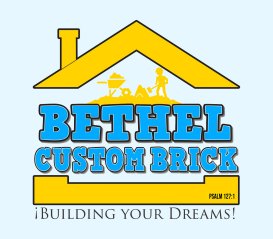Brick and stone structures are celebrated for their timeless beauty and durability, but over time, even the strongest masonry can show signs of wear. Mortar joints may deteriorate due to weathering, moisture, or age, compromising both the appearance and structural integrity of the masonry. This is where tuckpointing comes in. For those new to masonry restoration, tuckpointing is a crucial technique to maintain and restore brick and stonework. Here’s everything you need to know about this essential process.
What is Tuckpointing?
Tuckpointing is a specialized masonry repair technique that involves removing damaged or deteriorated mortar from between bricks or stones and replacing it with fresh mortar. The process not only strengthens the structure but also enhances its appearance by creating clean, uniform joints.
In traditional tuckpointing, two contrasting mortar colors are used: one to match the bricks or stones and another to create the appearance of thin, precise lines. This creates the illusion of perfectly uniform joints, adding to the aesthetic appeal of the masonry.
Why is Tuckpointing Important?
1. Restores Structural Integrity
Mortar serves as the glue that holds bricks or stones together. When it deteriorates, the structural stability of the masonry can be compromised. Tuckpointing restores the integrity of the mortar joints, ensuring the structure remains safe and sound.
2. Prevents Water Damage
Cracked or eroded mortar allows water to seep into the masonry, leading to issues such as mold, mildew, and freeze-thaw damage. Tuckpointing seals the joints, preventing moisture from penetrating the structure.
3. Enhances Appearance
Over time, mortar joints can become discolored or uneven. Tuckpointing refreshes the look of the masonry, restoring its original charm and adding curb appeal.
4. Extends the Lifespan of Masonry
By addressing mortar deterioration early, tuckpointing helps prevent more extensive and costly repairs. Regular maintenance can significantly extend the lifespan of brick and stone structures.
The Tuckpointing Process
Tuckpointing involves several steps to ensure a long-lasting repair:
- 1. Assessment: A professional mason inspects the mortar joints to determine the extent of damage and identify areas that require repair.
- 2. Mortar Removal: The damaged mortar is carefully removed using tools such as grinders or chisels to avoid damaging the surrounding bricks or stones.
- 3. Cleaning: The joints are cleaned to remove dust and debris, ensuring proper adhesion of the new mortar.
- 4. Mortar Application: Fresh mortar is applied to the joints, matched in color and texture to the original mortar for a seamless appearance.
- 5. Detailing: For traditional tuckpointing, contrasting mortar is applied to create fine, decorative lines.
- 6. Curing: The new mortar is allowed to cure properly, ensuring a strong bond and lasting durability.
When Does Your Masonry Need Tuckpointing?
Look for these signs to determine if your brick or stonework requires tuckpointing:
- Cracked, crumbling, or missing mortar
- Gaps or voids in the mortar joints
- Discoloration or staining on the mortar
- Water seepage or signs of moisture damage
- Loose or shifting bricks or stones
If you notice any of these issues, it’s best to consult a professional mason to assess your masonry and recommend appropriate repairs.
How Tuckpointing Protects Your Investment
Brick and stone structures are significant investments, whether they’re homes, chimneys, retaining walls, or commercial buildings. Regular tuckpointing not only preserves the aesthetic and structural integrity of these assets but also protects their value over time.
Partner with Bethel Custom Brick for Expert Tuckpointing Services
At Bethel Custom Brick, we specialize in tuckpointing and masonry restoration services for homes and businesses in the Detroit Metro area. Our skilled team combines craftsmanship with attention to detail to restore the beauty and durability of your brick and stonework. Contact us today to learn how we can help preserve your masonry for years to come!


